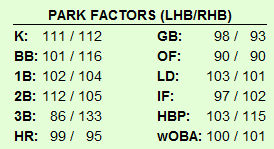- 203
- 16
- Joined
- Oct 11, 2004


Follow along with the video below to see how to install our site as a web app on your home screen.

Note: this_feature_currently_requires_accessing_site_using_safari
















Originally Posted by RaWeX05
Posted 11/18/11 at 1:00 PM
[h4]Just when you thought reality TV couldn't get any worse[/h4]
Grace, Villone, Benson, Kendall, Lenz
From the warped minds that brought you shows like "Basketball Wives," VH1 presents - wait for it - "Baseball Wives," set to premiere November 30.
We're pretty sure they should have named the program "Baseball Ex-Wives," though, because Tanya Grace is no longer with Mark Grace and Chantell Kendall is no longer with Jason Kendall.
But accuracy is probably not the top priority of this show.




Originally Posted by RaWeX05
Posted 11/18/11 at 1:00 PM
[h4]Just when you thought reality TV couldn't get any worse[/h4]
Grace, Villone, Benson, Kendall, Lenz
From the warped minds that brought you shows like "Basketball Wives," VH1 presents - wait for it - "Baseball Wives," set to premiere November 30.
We're pretty sure they should have named the program "Baseball Ex-Wives," though, because Tanya Grace is no longer with Mark Grace and Chantell Kendall is no longer with Jason Kendall.
But accuracy is probably not the top priority of this show.







